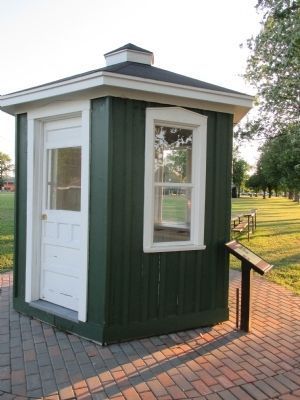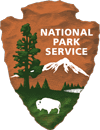
Suspension Bridge Tollhouse
After standing sentry at an international bridge, and then in a toll collector's backyard, an old tollhouse was restored in 2011.
Downriver from the wonder that is Niagara Falls lies the historic village of Lewiston, NY. In 1851, the Lewiston-Queenston Suspension bridge was built to connect the U.S. and Canada. It cost 25 cents to cross the bridge, whether by foot or horse and buggy. The bridge was destroyed by a terrible windstorm in 1864. For the next 35 years, cables and other remnants of the wrecked bridge hung over the river and ferryboats were once again used to transport people and goods across the border.
Construction of a second suspension bridge began in the late 1890s and was completed in 1899. The Suspension Bridge Tollhouse was part of the new international crossing. On opening day, “the bridge was ‘bedecked with bunting and flags from both countries, the Stars and Stripes and the Union Jack.' Dignitaries met in the middle of the bridge for a ceremony and then rode trolley cars to Queenston Heights Park where an elaborate luncheon was served.”
After the festivities, people paid the toll and walked across the bridge into Canada. “There were few, if any, automobiles in the area at that time” to make the same crossing.
On September 6, 1901, President William McKinley and First Lady Ida Saxton McKinley toured the new bridge while in the area for the Pan-American Exposition. While travelling on the Great Gorge Railway in Niagara Falls, they marveled at the stunning scenery as they sat poised “just feet from the swirling whirlpools and rapids of the Niagara River.” In Lewiston, they took the train halfway across the new bridge before returning to Niagara Falls for lunch at the International Hotel. Later that afternoon, President McKinley was assassinated in Buffalo. He died eight days later.
The second bridge was replaced in 1962 by the larger, more modern steel arch Lewiston-Queenston bridge known to international travelers today. “A long-time toll collector from the Town of Cambria [….] was given the tollhouse as a retirement gift. He put it in his backyard, put shelves in it, and used it as a garden shed.”
This might have been the end of the story if not for the DiBella Family who bought the Cambria house nearly 50 years later. A neighbor told them about the historical significance of the structure in their backyard. The DiBellas purchased the tollhouse and donated it to the Historical Association of Lewiston in 2011. Several groups then joined together to help salvage and restore the old tollhouse. Volunteer Robert H. Welsh completed the restoration in his Lewiston driveway.
The Suspension Bridge Tollhouse is now on permanent loan to the Village of Lewiston from the Historical Association of Lewiston. It is located in Academy Park, next to the Lewiston Welcome Center.
Hope L. Russell, Ph.D.

